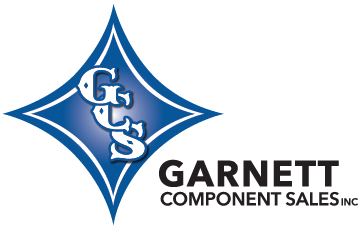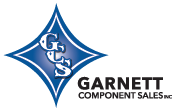Creating custom parts for Original Equipment Manufacturers (OEMs) can be tricky. These parts typically require highly specific specifications, and producing them correctly necessitates time, precision, and effective coordination. It’s not just about cutting shapes but ensuring each piece performs reliably and consistently across long production runs.
Managing design files, coordinating with vendors, testing prototypes, and scaling the process can easily overwhelm even experienced OEM teams. That’s where injection molding services come in. These services are designed to simplify the process by offering a smoother, faster, and more precise way to produce complex, functional parts.
OEMs across industries like automotive, aerospace, and medical devices use injection molding to meet strict design specifications while staying on deadline and within budget. This process gives businesses a way to turn raw ideas into production-ready parts without hitting roadblocks.
Understanding Injection Molding Services
Injection molding works by injecting molten material into a custom-designed mold. Once it cools and solidifies, you’ve got a fully formed part that matches the original design. This method allows manufacturers to make large quantities of identical components quickly without sacrificing precision.
One big plus is how easy it is to make complex shapes. Whether it’s intricate designs, small tolerances, or interlocking parts, injection molding can handle it. The flexibility of materials is another advantage. OEMs can choose from various materials such as:
– ABS for general-purpose strength and toughness
– Polycarbonate (PC) for impact resistance
– Nylon for applications that need durability and flexibility
– Advanced composites or high-temp plastics when performance matters
And it’s not just plastic. Some processes also support metal and ceramic injection molding when the project requires something beyond a polymer.
Why do so many OEMs gravitate toward this method? Because it’s consistent, scalable, and easy to replicate.
The Benefits for OEMs
Injection molding doesn’t just get the job done—it does so in a way that fits the operational goals of most OEMs. Whether you’re manufacturing one thousand units or one hundred thousand, the benefits scale with your output.
Here are some standout benefits:
1. Lower Manufacturing Costs
Once the mold is created, the cost to produce each part drops significantly. The same mold can be used for tens of thousands of parts, and because there’s minimal material waste, you’re not paying for what you don’t end up using.
2. Consistent High Quality
With every cycle, the mold produces an identical part. There’s no room for inconsistency, making this perfect for applications where performance and appearance can’t vary.
3. Design Flexibility
Want to change the design before ramping up production? That can be done by modifying the mold or switching out features. Even highly detailed or multi-material parts can be made with precision.
4. Smooth Scalability
As your demand grows, injection molding can keep pace. Multi-cavity molds allow multiple parts to be formed in one shot, so increasing production volume doesn’t mean sacrificing lead times or quality.
Let’s use a real-world example. Imagine a car manufacturer that needs a heat-resistant plastic gear for a dashboard control unit. It has to fit within a small built-in space and operate without failure in high heat. With injection molding, they can perfect the design, test materials, and then move seamlessly into high-volume production. Every piece will be the same, from the hundredth to the hundred-thousandth unit.
Simplifying the Manufacturing Process
Is your team spending too much time fixing small issues or changing vendors mid-project? With injection molding, all stages from design to delivery become much more predictable. You’re no longer jumping between workshops, chasing parts, or dealing with inconsistent quality.
Here’s how the process streamlines production:
– Final part designs are translated directly into tooling, reducing back-and-forth.
– Multi-cavity molds allow more than one part to be created during the same cycle.
– Automated systems cut down on labor needs and improve production speed.
– The molded parts need very little finishing since the precision tooling gets it right at the source.
This method cuts down rework, limits the need for post-production fixes, and slashes time lost on quality control issues. Having a single streamlined process end-to-end helps avoid delays, especially during product launches or urgent production runs.
OEMs often underestimate just how much time and cost are wrapped up in process coordination. With a clean rollout led by injection molding, the whole line gets more efficient. Products land on shelves sooner, and the risk of delay starts to disappear.
Choosing the Right Partner for Injection Molding
Not all injection molding companies offer the same value, and the difference often comes down to experience and equipment. To get the results OEMs need, it’s critical to choose service providers that understand the industries they serve and bring the right mix of technical skill and factory capabilities.
Before selecting a partner, OEMs should ask:
– Do they work with companies in our industry?
– Can they scale production swiftly as we grow?
– Are they familiar with compliance or performance standards we must meet?
– Are their technologies and materials aligned with the specs we need?
From material selection to tooling design to production rollouts, experienced teams can catch issues early and offer smarter ways forward. That’s what separates a solid partner from someone who just builds what’s asked and moves on.
OEMs in the Southeast United States looking for a local team can find extra value in working with established representatives like Garnett Component Sales. Our team focuses on helping you align your goals with the right manufacturing approach, ensuring accuracy, consistency, and supply chain ease.
Embrace Hassle-Free Custom Parts Manufacturing
Injection molding services let OEMs take a structured path to manufacturing, one where issues get solved early and production keeps moving. Whether you’re building a new part from scratch or improving an old design, this process brings efficiency and control to a field that typically presents more friction than needed.
With tight cadences, high product expectations, and narrow margins, OEMs don’t have much room for guesswork. Getting a reliable process in place—one backed by precision tooling and repeatable quality—makes development and production less stressful.
From small applications in medical devices to high-volume runs in automotive or aerospace, injection molding continues to be one of the most trusted ways to produce high-performing, consistent parts without missing deadlines or blowing the budget.
To explore how injection molding services can support your next production run—whether you’re scaling up or starting from scratch—connect with the team at Garnett Component Sales to see how we can align with your goals and help bring your custom parts to life through reliable, streamlined solutions. Learn more about our approach to quality-driven injection molding services.




